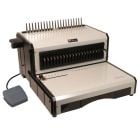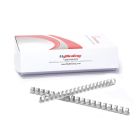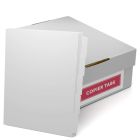Publishing and Binding Your Own Booklets
Putting your own books together is a great way to save money and gives you the flexibility to complete your project on your own timeline. Here are some ideas to help get you started.
Pick a Theme or Genre:
You have probably decided on this long ago, right? If, however, for some reason you haven't, now is the time to start to think about what kind of book you would like to put together. Some of the most common types of home or small office-produced books are:
1. Poetry. Putting together a collection of your poetry is a great way to get your work out into the world, and the process of editing and culling your poems can be very useful and constructive.
2. Photographs. Digital photography has made shutterbugs of us all, and putting together books of photos of vacations, family reunions, special events or holidays is one way to make sure that they stay with us forever.
3. Novels and Short Stories. You don't have to be a published author to get your work in hardcover form. You can print and bind your works of fiction at home whenever you like.
4. Cookbooks. Whether you are creating hundreds of books for a fundraising project, or just enough to hand out to friends and family, you can quickly and easily put your cookbooks together all by yourself.
5. Presentations, Reports, and Proposals. Whether you are currently running a small business or you are looking for ways to get one started, putting together attractively bound proposals and other promotional materials on an as needed basis, and edited for specific audiences is a great way to control your message and appeal to the right people.
These are, of course, just a few examples. You may also be looking to publish and bind a family history, book of children's stories, comic book, or even a coloring book. When you do your own binding and have your own machine at the ready, the possibilities are endless.
Editing, Proofreading, and Layout
Just because you are doing your work yourself doesn't mean that your book can't look as good and read as well as those of the big boys. Be sure to have some trusted friends or colleagues go over your book with a fine tooth comb to check for any spelling or grammar errors. If you need help with readability, you can either use the services of a friend, or hire a professional. If you have a college nearby, you might enlist the services of a graduate student, who will almost certainly work at a lower rate than a professional.
Layout is best done with software such as InDesign, Illustrator or QuarkXpress. If you do not have access to these, there are similar programs you can download for free, or, depending on the scope of your project, you may be able to use a word processing program such as MS Word.
Printing and Binding:
If parts of your book are in color, you will want to use a four color digital process for those pages. The rest should be laser printed. As far as binding your book, there are numerous options. Plastic Comb binding is great for cookbooks, music books and instruction manuals; Spiral Coil binding is great for menus and notebooks or journals, Twin-loop binding is a great way to display your photography or your poetry, and Thermal binding gives you a perfect, bookstore-ready look that will last forever. All of these methods use machines that are both inexpensive and easy to use, making them a cost-effective solution to running to the print shop every time you need to put a document together in a short time frame.









